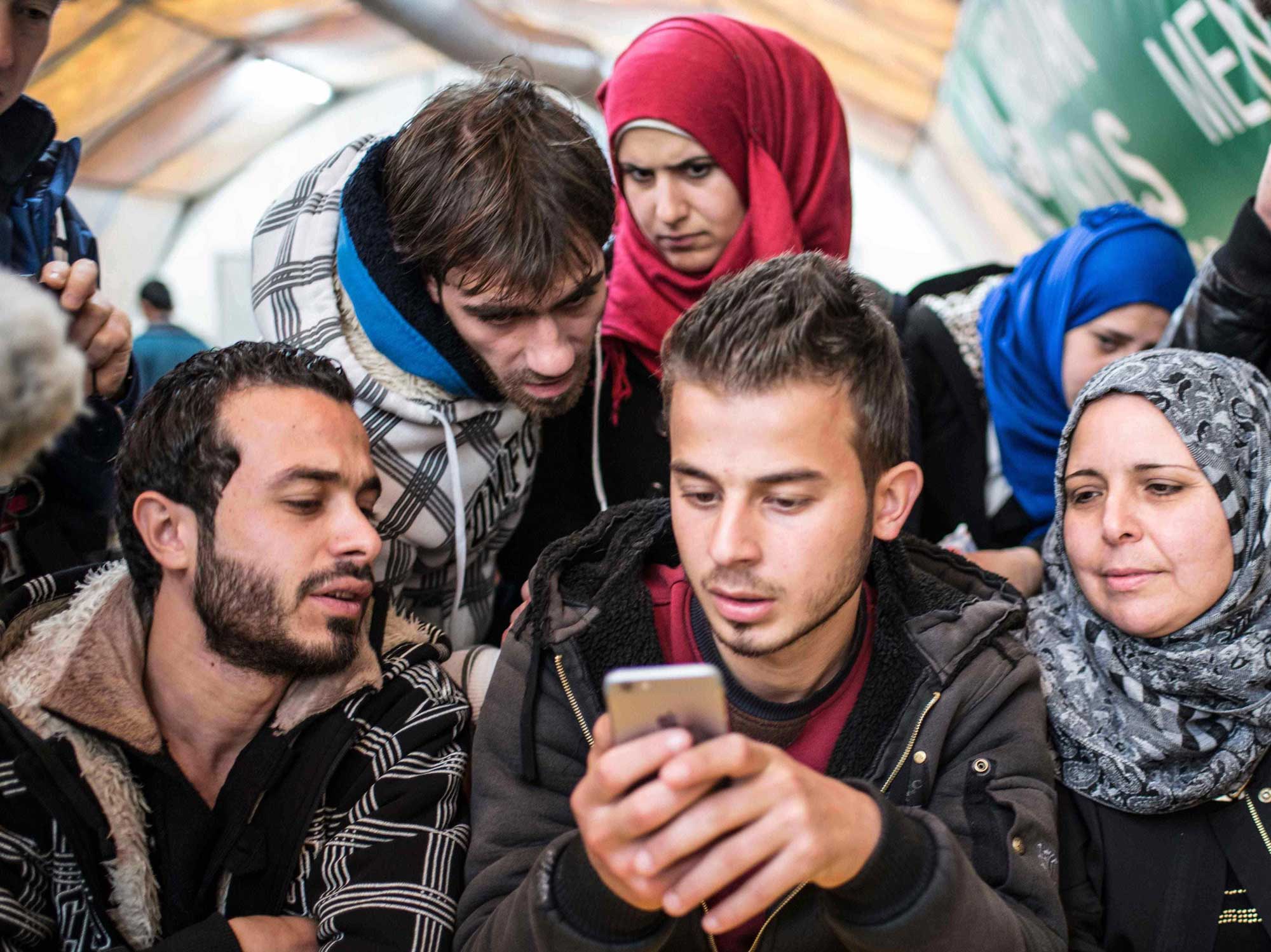
Integrate Digital Technology in Cultural Orientation
DOWNLOAD FULL PDF
The integration of digital technology in Cultural Orientation benefits both providers and refugees. For Cultural Orientation providers, digital technology can be used to customize and enhance participant learning, reinforce key messages, and extend learning outside Cultural Orientation. For refugees, exposure to digital technology can improve understanding of the resettlement experience and promote self-sufficiency.
IMAGE CAROUSEL
Assess Capacity
Slide Content
Assess Capacity
Prior to integrating digital technology in Cultural Orientation, providers should assess their personal capacity, their organizational capacity, and their learner capacity to use digital technology. Cultural Orientation providers may start by reflecting on their own abilities and comfort-level with digital technology. In doing this, Cultural Orientation providers can better understand how those factors may influence how they will use digital technology in Cultural Orientation and how they will teach others to use it. The extent to which digital technology is integrated in Cultural Orientation is also contingent upon organizational resources, so Cultural Orientation providers should make note of their access to WiFi and the availability of other relevant audio/visual equipment. Finally, Cultural Orientation providers should assess their learners’ digital abilities. A lack of digital literacy should not exclude learners from accessing digital technology in Cultural Orientation but will require additional planning and considerations.
Supplement and enhance, don’t replace
Digital technology should not be used to replace Cultural Orientation instruction. By integrating digital technology with other in-person activities, Cultural Orientation providers are using blended learning techniques. Blended learning draws on utilizing both in-person and digital learning. Blended learning reflects the increasing role of digital technology in daily life and, by extension, the resettlement process.
Keep it practical
When deciding when and how to integrate digital technology in Cultural Orientation delivery, Cultural Orientation providers should identify the purpose behind the digital resource or tool they will be using. Cultural Orientation providers may use a digital resource to teach a specific Cultural Orientation topic. Alternatively, they may incorporate digital technology tools to improve learners’ digital skills in connection with a specific Cultural Orientation requirement (examples are provided in the “Digital Technology and the Resettlement Process” breakout box). In either case, the purpose should have practical and meaningful application to the participants. This means customizing digital technology application to learner needs.
Create a positive learning environment
As with any Cultural Orientation session, Cultural Orientation providers will need to create a positive learning environment particularly when learners have different digital literacy levels. Those with lower digital literacy may be inherently more skeptical and have greater discomfort when engaging with technology, while those more adept at digital technology may need to be challenged more. For all learners though, creating a positive learning environment also includes proper planning and set-up of the digital technology that will be used, and as a Cultural Orientation provider, having alternative plans when technology does not work.
Examples of Experiential Learning in Cultural Orientation
- Preview the topic of transportation by playing the first 50 seconds of the Public Transportation in the U.S. slideshow without audio. Ask learners about their impressions of what transportation in the U.S. might be like; then play slideshow again with audio to check their answers.
- Complete the Spectrum Activity from the Employment for Refugee Women lesson plan, and then lead follow-up discussion using the Employment for Refugee Women podcast to reinforce key messages.
- Have learners work in pairs. Assign each pair different chapters of the Settle In mobile app. After pairs have completed a chapter, have them exchange with other pairs what they learned.
- For larger groups, assign learners different Cultural Orientation topics. Ask them to review resources on the Settle In website and then prepare interactive presentations to teach others the key points on their given topic.
- Take learners on a field trip to a local library with computers. Provide learners with a list of reputable links for accessing community services. Ask them to navigate to these online resources using the computers.
- Guide learners in downloading the Settle In mobile app. Ask them to complete a chapter of the app at home, corresponding with a subject already covered in Cultural Orientation. Ask them to share their experiences during the next Cultural Orientation session.
Practice in Action
RSC Eurasia has identified two practical ways to integrate digital technology in Cultural Orientation. Serving learners with strong digital skills, RSC Eurasia offers digital access to the Welcome Guide using a QR code posted in the Cultural Orientation class. This allows learners to download the Welcome Guide during and after Cultural Orientation. They have also incorporated technology into the monitoring and evaluation of Cultural Orientation by creating a survey which is also accessible through a QR code.
Digital Technology and the Resettlement Process
The following are possible ways that refugees may interact with digital technology during the resettlement process. These interactions are opportunities to improve learners’ digital skills. This is an illustrative list and may not apply to all refugees.
- Accessing Resettlement Support Center online case-status portal
- Learning more about the resettlement process through the Settle In website
- Accessing public benefits and community-based services
- Communicating via email with the resettlement agency
- Searching for jobs
- Managing finances and banking
- Paying bills online
- Engaging with their children’s school
- Submitting a change in address
- Scheduling health appointments
- Accessing online language learning resources
- Registering for Selective Service (if applicable)


